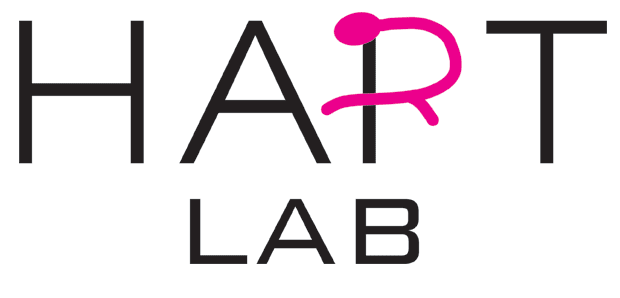Projects in the Hart Lab
Current projects in the Hart lab using C. elegans span from basic neurobiology to more disease-oriented and translational research. As part of the ASPE group at the Perelman School of Medicine, the Hart lab works closely with researchers studying autism and autism-associated genes in Drosophila, mice, zebrafish, iPSCs, and humans.
Most research projects in the lab are interconnected, but can be separated into two main groups
1. Projects studying the GABAergic DVB neuron, which we described as the first example of experience-dependent neuronal morphologic plasticity in C. elegans. While the DVB neuron is present in both sexes, it only undergoes morphologic plasticity in males, having sexually dimorphic connectivity patterns and behavioral functions. This plasticity results in the rewiring of DVB’s synaptic connections, altering circuits involved in male mating behavior, and representing plasticity at the circuit level.
Cartoons of DVB neuron in each sex of C. elegans, with wiring diagram of DVB synaptic connections within each respective sex-specific circuit based on EM reconstruction (wormwiring.org).
2. Using behavioral phenotyping to identify functional roles for genes that can then be studied at the cell, molecular, and circuit levels. We are currently focusing on various foraging related behaviors, including the conserved response to food deprivation and the decision to forage alone or in groups. These behaviors are regulated by well-defined circuits including multiple defined neuron types.
Basic Neurobiology Research Projects:
Identifying the mechanisms by which genes control behavior and plasticity by analyzing location of function within neuronal circuits, impact on synapses and connectivity, and interactions between genes of interest.
The GABAergic DVB neuron in males at day 1, 3, and 5 of adulthood showing progressive neurite outgrowth (arrows)(lim-6::wCherry), with new neurites making additional pre-synaptic connections (lim-6::gfp::rab-3).
Disease-oriented Research Projects:
The disease-oriented research projects in the lab focus on elucidating the functions of genes associated with autism, schizophrenia, and other neurodevelopmental conditions using C. elegans as a screening platform. These projects utilize many techniques, including creating and testing strains with conserved variants or humanized animals expressing forms of the human gene. Small molecule screening for modifiers of behavior and behavioral phenotypes.
C. elegans can be utilized as a model to study how mutations in autism-associated gene orthologs may impact DVB neuron morphology and circuit plasticity, as well as behavioral phenotypes that implicate additional functions in novel neuronal circuits.
Areas of Focus
Cell and Molecular Neuroscience, Genetics, Neurobiology of Disease, Developmental Neuroscience, schizophrenia, autism and other neurodevelopmental disorders, Neurobiology of stress, Synaptic plasticity, synaptogenesis and circuit formation, circuit plasticity





